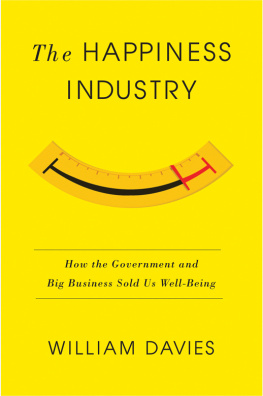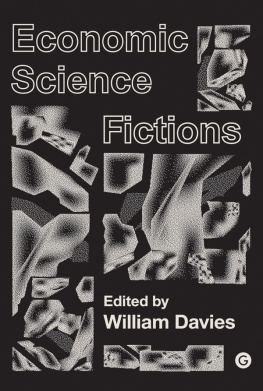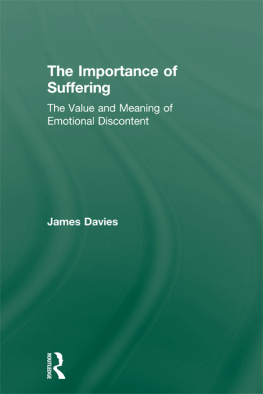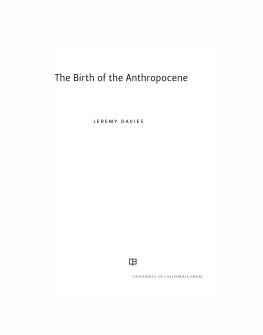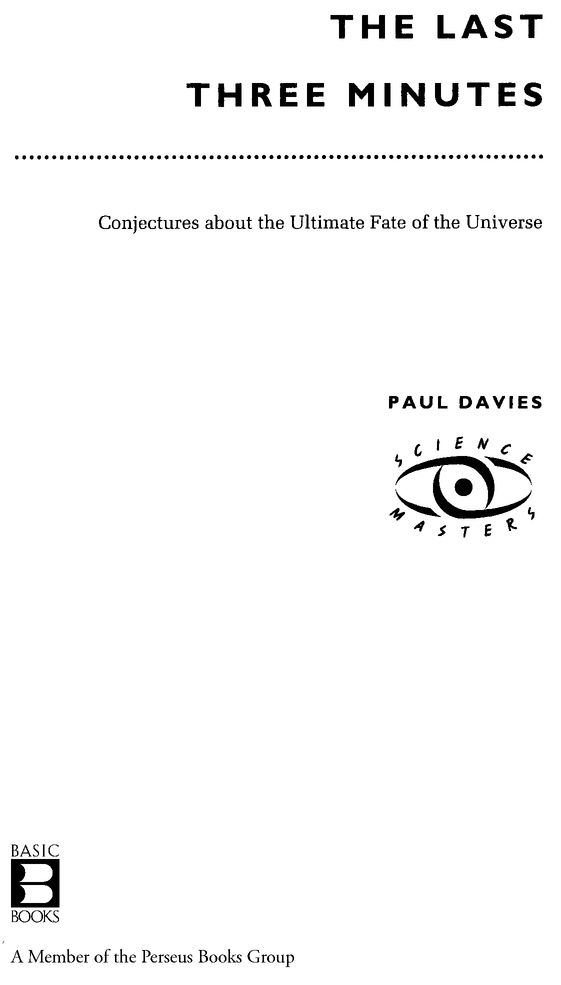Table of Contents
Other Books in the SCIENCE MASTER SERIES
The Periodic Kingdom
by P.W. Atkins
Natures Numbers
by Ian Stuart
The Origin of Humankind
by Richard Leakey
The Origin of the Universe
by John D. Barrow
Kinds of Minds
by Daniel C. Dennett
How Brains Think
by William H. Calvin
River Out of Eden
by Richard Dawkins
Laboratory Earth
by Stephen H. Schneider
And so some day,
The mighty ramparts of the mighty universe
Ringed round with hostile force,
Will yield and face decay and come crumbling to ruin.
Lucretius, De Rerum Natura
PREFACE
When I was a student in the early 1960s, there was intense interest in the problem of the origin of the universe. The big-bang theory, which dated from the 1920s but had been considered seriously only since the 1950s, was well known but far from convincing. The rival steady-state theory, which did away with a cosmic origin altogether, was still the most fashionable scenario in some quarters. Then came the discovery of the cosmic background heat radiation by Robert Penzias and Arno Wilson in 1965, and the subject was transformed. This, surely, was clear evidence for a hot, violent, abrupt origin of the universe.
Cosmologists feverishly worked through the implications of the discovery. How hot was the universe one million years after the big bang? One year after? One second? What sort of physical processes would have occurred in that primeval inferno? Might there be relics from the dawn of creation retaining an imprint of the extreme conditions that must then have prevailed?
I well remember attending a lecture on cosmology in 1968. The professor finished by reviewing the big-bang theory in the light of the discovery of the background heat radiation. Some theoreticians have given an account of the chemical composition of the universe based on the nuclear processes that occurred during the first three minutes after the big bang, he related with a smile. Everyone in the audience laughed uproariously. It seemed absurdly ambitious to try to describe the state of the universe just moments after it had come into existence. Even the seventeenth-century archbishop James Ussher, whose study of the minutiae of biblical chronology led him to declare that the universe was created on October 23, 4004 B.C., did not have the temerity to catalog the precise sequence of events during the first three minutes.
Such is the pace of scientific progress that barely a decade after the discovery of the cosmic background heat radiation, the first three minutes had become standard fare for students. Textbooks were written on the subject. Then in 1977 the American physicist and cosmologist Steven Weinberg published a best-selling book aptly titled The First Three Minutes. It proved to be a landmark in popular science publishing. Here was one of the worlds experts providing the general public with a detailed and totally convincing account of processes that occurred mere moments after the big bang.
While the public was catching up with these heady developments, the scientists themselves were moving on. Attention began to shift from what had become known as the early universemeaning minutes or so after the big bangto the very early universean almost infinitesimal fraction of a second after the beginning. Another decade or so later and the British mathematical physicist Stephen Hawking was confidently able to describe, in A Brief History of Time, the latest ideas about the first trillion-trillion-trillionth of a second. The laughter ending that lecture in 1968 now seems rather hollow.
With the big-bang theory well established in both the popular and the scientific mind, more and more thought is being given to the future of the universe. We have a good idea how the universe began, but how will it end? What can we say about its ultimate fate? Will the universe finish with a bang or a whimperindeed, will it ever end at all? And what of us? Can humanity or our descendants, be they robotic or flesh and blood, survive for all eternity?
It is impossible not to be curious about such matters, even though Armageddon may not be just around the corner. Our struggle for survival on planet Earth, which is currently beset by man-made crises, is placed in a welcome new context when we are forced to reflect on the cosmological dimension of our existence. The Last Three Minutes is the story of the future of the universe, as best we can predict it, based on the latest thinking by some well-known physicists and cosmologists. It is not all apocalyptic. In fact, the future holds the promise of unprecedented potential for development and richness of experience. But we cannot ignore the fact that what can come to exist can also cease to exist.
This book is intended for the general reader. No prior knowledge of science or mathematics is necessary. From time to time, however, I need to discuss very large or very small numbers, and it helps to use a compact mathematical notation known as the powers of ten to represent them. The number one hundred billion, for example, when written out in full, is 100,000,000,000, which is rather cumbersome. There are eleven zeros after the 1 in this number, so we can represent it by writing 1011in words, ten to the eleventh power. Similarly, one million is 106 and one trillion is 1012. And so on. Remember, however, that this notation tends to camouflage the rate at which these numbers grow: 1012 is a hundred times bigger than 1010; it is a much bigger number, even though it looks almost the same. Powers of ten, used negatively, can also represent very small numbers: thus the fraction one-billionth, or 1/1,000,000,000, becomes 10-9 (ten to the minus nine), because there are nine zeros after the 1 on the bottom of the fraction.
Finally, I should like to warn the reader that this book is necessarily highly speculative. While most of the ideas to be presented are based on our best current understanding of science, futurology cannot enjoy the same status as other scientific endeavors. Nevertheless, the temptation to speculate about the ultimate destiny of the cosmos is irresistible. It is in this spirit of open-minded inquiry that I have written this book. The basic scenario of a universe originating in a big bang, then expanding and cooling toward some final state of physical degeneration, or perhaps collapsing catastrophically, is fairly well established scientifically. What is far less certain, however, are the dominant physical processes that may occur over the immense time scales involved. Astronomers have a clear idea of the general fate of ordinary stars, and are becoming increasingly confident that they understand the basic properties of neutron stars and black holes; but if the universe endures for many trillions of years or more, there may be subtle physical effects about which we can only conjecture that eventually become very important.
When faced with the problem of our incomplete understanding of nature, all we can do to try and deduce the ultimate fate of the universe is to employ our best existing theories and extrapolate them to their logical conclusions. The problem is that many of the theories having an important bearing on the fate of the universe remain to be tested experimentally. Some of the processes I discussfor example, gravitational-wave emission, proton decay, and black-hole radianceare enthusiastically believed by theorists but have not yet been observed. Just as seriously, there will undoubtedly be other physical processes we know nothing about that could dramatically alter the ideas presented here.



